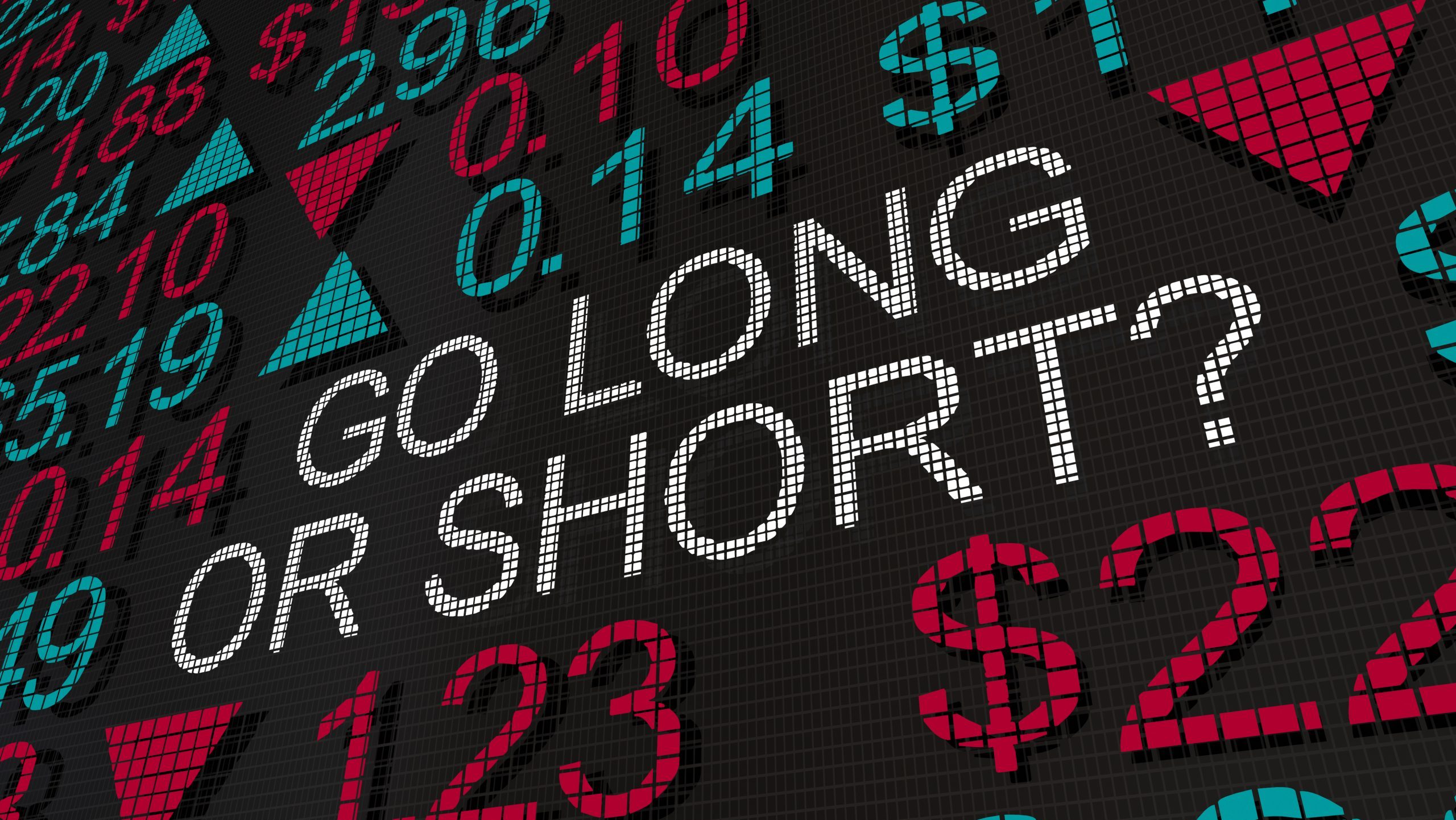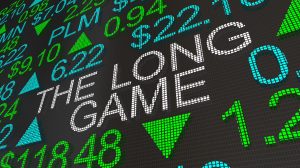
In the thrilling world of trading, one of the most pressing questions you might encounter is whether to steer your energy towards short-term or long-term trade. The article “Should I Focus On Short-term Or Long-term Trading?” explores this powerful, decision-making crossroads. As trends shift and markets fluctuate, you’ll gain insight into the strengths and drawbacks of each approach, absorbing expert guidance on how to derive maximum benefit from your chosen investment horizon. This insightful journey through financial strategies will arm you with knowledge, enabling you to make wise trading decisions that align with your individual goals and risk tolerance.
Understanding Short-term Trading
Short-term trading refers to the practice of buying and selling financial instruments within a short time frame. This could range from a few seconds to a few weeks. Traders who engage in this type of trading are primarily interested in capitalizing on small price fluctuations to make quick profits.
Definition of short-term trading
In simple terms, short-term trading is a strategy that involves holding onto financial assets for short periods. It’s a high-engagement, fast-paced style aiming to take advantage of minute changes in an asset’s price. Typical short-term trades include swing trading, day trading, and even scalping.
Different types of short-term trading
There are several types of short-term trading strategies that you can consider. Day trading involves buying and selling securities within a single trading day. Scalping aims to profit from small price changes, and positions are often held for just a few minutes. Lastly, swing trading involves trading over a period of days to weeks, aiming to profit from price changes or ‘swings.’
Pros and cons of short-term trading
Short-term trading offers several benefits. You have the potential for quick returns and can make a substantial profit if you make the right moves. However, it’s also riskier, as you’re more vulnerable to market volatility. The high level of engagement required can also be stressful, and transaction costs can add up due to frequent trading.
Understanding Long-term Trading
Long-term trading involves buying and holding onto assets over an extended period, ranging from several months to many years. The goal is to profit from gradual price movements and dividends distributed over time.
Definition of long-term trading
Simply put, long-term trading entails investing in financial assets with an investment horizon spanning several years. Long-term traders tend to focus more on fundamental analysis, including an asset’s intrinsic value, rather than short-term price movements.
Different types of long-term trading
Buy-and-hold is the most common type of long-term trading, which involves purchasing securities and holding onto them for many years. Other strategies include position trading, which implies investing over a period of weeks or months, and trend trading, where trading decisions are made based on the direction of the prevailing price trend.
Pros and cons of long-term trading
Long-term trading can provide more stable returns and is less affected by short-term market fluctuations. It’s also less time-consuming and stressful compared to short-term trading. However, the potential returns might be slower to materialize, and there’s the risk of holding onto declining assets for too long.
Key Differences Between Short-term And Long-term Trading
The choice between short-term and long-term trading often comes down to differences in trading strategies, risk and reward profiles, time commitment, and costs.
Trading strategies
Short-term trading strategies focus on minute price movements and technical indicators, whereas long-term strategies emphasize fundamental analysis and the overall potential of an asset.
Risk and reward
Short-term trading has the potential for faster, more significant returns but also comes with higher risk due to quick market fluctuations. In contrast, long-term trading involves slower, more stable profits, but lower overall risk.
Time involvement
Short-term trading requires a significant time commitment because it involves constant market monitoring. On the other hand, long-term trading requires less time, as once an investment is made, it’s typically held for an extended period.
Cost and expenses
Short-term trading can incur higher costs due to frequent transactions and the associated brokerage fees. Long-term trading typically has lower transaction costs, but there could be potential costs of holding onto an investment.
Factors Affecting Short-term Trading
Several factors can influence short-term trading, including market volatility, industry trends, economic indicators, and day-to-day news.
Market Volatility
Short-term trading often takes advantage of volatile markets. High volatility can lead to larger price swings, creating opportunities for profits.
Industry Trends
Knowing the latest industry trends can be helpful in short-term trading as these trends can impact asset prices quickly and significantly.
Economic Indicators
Key economic indicators like GDP figures, employment data, and consumer sentiment indices can cause significant short-term market movements.
Day-to-day News
Daily news events like earnings announcements, political developments, or unexpected company news can lead to sudden shifts in asset prices, affecting short-term trading.
Factors Affecting Long-term Trading
Long-term trading requires careful analysis of wider, more macroeconomic factors, such as economic policies, industry growth, market trends, and the company’s long-term performance.
Economic Policies
Government and central bank policies can have a considerable influence on asset prices in the long term. Changes in interest rates, taxation, and industry regulation, for instance, can affect long-term trading.
Industry Growth
The growth prospects of an industry can impact the long-term performance of companies within that industry, thus affecting long-term trading decisions.
Market Trends
The long-term market trends can provide insight into future price movements, helping long-term traders make strategic investment decisions.
Company Performance
Long-term investors analyze a company’s financial health, earnings potential, and other indicators of long-term success when making investment decisions.
Financial Goals and Trading
Aligning your trading strategies with your financial goals is crucial in determining whether to engage in short-term or long-term trading.
Aligning Trading Style with Financial Goals
Your trading style should reflect your financial goals. If you’re aiming for quick profits, short-term trading could be ideal. However, if you’re planning for future financial stability or retirement, long-term trading might better suit your needs.
Short-term trading for Immediate Financial Needs
Short-term trading can be a potential source of immediate income. However, keep in mind the high risk involved and ensure that it aligns with your risk tolerance levels.
Long-term Trading for Future Planning
Long-term trading can prove beneficial in planning for long-term goals such as retirement or children’s education. It offers slower, more steady returns and can be less risky.
Risk Management in Short-term and Long-term Trading
Both short-term and long-term trading come with their unique set of risks. Successful trading involves effective risk management strategies for each trading style.
Understanding Risk Profiling
Risk profiling involves understanding your willingness to take on financial risk and your financial ability to bear it. It’s vital in determining whether to engage in high-risk short-term trading or more conservative long-term trading.
Techniques for Risk Management
Several techniques including setting stop-loss orders, diversifying your portfolio, and regularly rebalancing your portfolio can help manage trading risks.
Role of Risk Management in Trading
Risk management is crucial in trading to protect your investment capital. A solid risk management strategy can prevent substantial monetary losses during unfavorable market conditions.
Trading Psychology for Short-term and Long-term Traders
Trading psychology, including emotional discipline and patience, is crucial to making sound trading decisions and controlling greed and fear.
Emotional Discipline
Whether you’re a short-term or long-term trader, keeping emotions in check and remaining objective can help you make better trading decisions.
Importance of Patience
Patience is vital in trading. For short-term traders, it involves waiting for the right trading setup. For long-term traders, it’s about holding onto investments and not being swayed by short-term market fluctuations.
Controlling Greed and Fear
Greed and fear can significantly impede your trading success. Understanding these emotions and how to control them can enhance your trading performance, irrespective of whether you’re a short-term or long-term trader.
Tools and Resources for Short-term Trading
Effective short-term trading requires the right tools and resources, such as trading platforms, real-time market data, and advanced analytical tools.
Trading Platforms
For short-term traders, a robust trading platform offering quick execution, advanced charting features, and tight spreads is crucial.
Real-time Market Data
Short-term trading relies on minute-by-minute price movements, making access to real-time market data invaluable.
Analytical Tools
Analytical tools, such as technical indicators and chart patterns, can provide valuable insight into potential price movements, aiding in decision making.
Tools and Resources for Long-term Trading
Long-term traders also require appropriate tools and resources, like experienced investment brokers, fundamental analysis tools, and access to reliable investment newsletters and journals.
Investment Brokers
A reputable investment broker can offer valuable advice, particularly for novice long-term traders. They can help in making informed, strategic investment decisions.
Fundamental Analysis Tools
Long-term trading requires a deep understanding of an asset’s value. Tools that aid in fundamental analysis, such as financial ratios and earnings reports, can be useful.
Investment Newsletters and Journals
Keeping up-to-date with market news and trends can help long-term traders make informed investment decisions. Investment newsletters and journals can provide this information.





